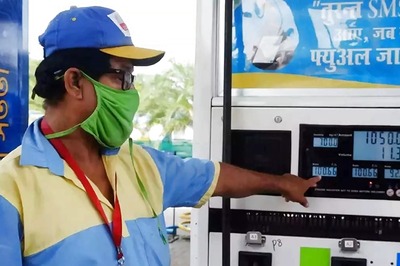
views
India’s service sector growth eased to a five-month low in May amid fierce competition, price pressures and a severe heatwave, even as new orders from international markets expanded at the steepest pace in a decade, according to a monthly survey released on Wednesday.
The seasonally adjusted HSBC India Services Business Activity Index fell to 60.2 in May from 60.8 a month earlier, its lowest mark since last December.
Survey participants attributed the figures to domestic new orders easing slightly while remaining robust, implying strong demand conditions and successful advertising.
In the Purchasing Managers’ Index (PMI) parlance, a print above 50 means expansion, while a score below 50 denotes contraction.
May data showed that robust increases in new business intakes continued to underpin output growth across India’s service economy.
As per the survey, another positive takeaway was a rebound in business confidence to its strongest in eight months.
Growth was reportedly supported by rising sales, productivity gains, and demand strength. The upturn was somewhat hampered by competitive and price pressures.
Maitreyi Das, Global Economist at HSBC, said: “India’s service activity rose at a slightly softer pace in May, with domestic new orders easing slightly, but remaining robust, implying strong demand conditions and successful advertising.
“On the price front, cost pressures ticked up in May led by higher raw material and labour costs. Firms were only able to transfer a part of the price rise to customers.”
Like for output, new orders rose at a substantial pace, but were the slowest in the calendar year-to-date, even as fierce competition and extreme heat across the country dampened growth.
One area that improved substantially in May was new export orders, with growth climbing to the fastest seen since the inception of the series in September 2014. Survey participants noted strong growth of demand from Asia, Africa, Europe, the Middle East, and the US.
Cost pressures intensified in May. According to panel members, outlays on materials and labour rose — while some companies suggested that additional labour costs stemmed from overtime payments and upward salary revisions due to demand strength and productivity gains, several firms indicated having taken on extra staff.
Not only did employment rise markedly, but also to the greatest extent since August 2022, the survey said. Outstanding business volumes rose at the quickest pace in nearly three-and-a-half years, it said, adding that the overall level of positive sentiment climbed to an eight-month high.
Meanwhile, the HSBC India Composite Output Index slipped to 60.5 in May from 61.5 in April, highlighting the slowest rate of expansion since last December.
There were softer increases in both factory production and services activity and aggregate sales rose at the weakest pace in the calendar year-to-date, albeit one that was historically sharp. Goods producers outperformed service providers, though growth softened in both cases.
“Good news is the level of optimism about the year-ahead outlook rose at the fastest pace in eight months, leading service firms to increase their staffing levels. Overall composite output rose at a slightly slower pace, led by slower rises in both factory production and service activity,” Das added.
Composite PMI indices are weighted averages of comparable manufacturing and services PMI indices. Weights reflect the relative size of the manufacturing and service sectors according to official GDP data.



















Comments
0 comment